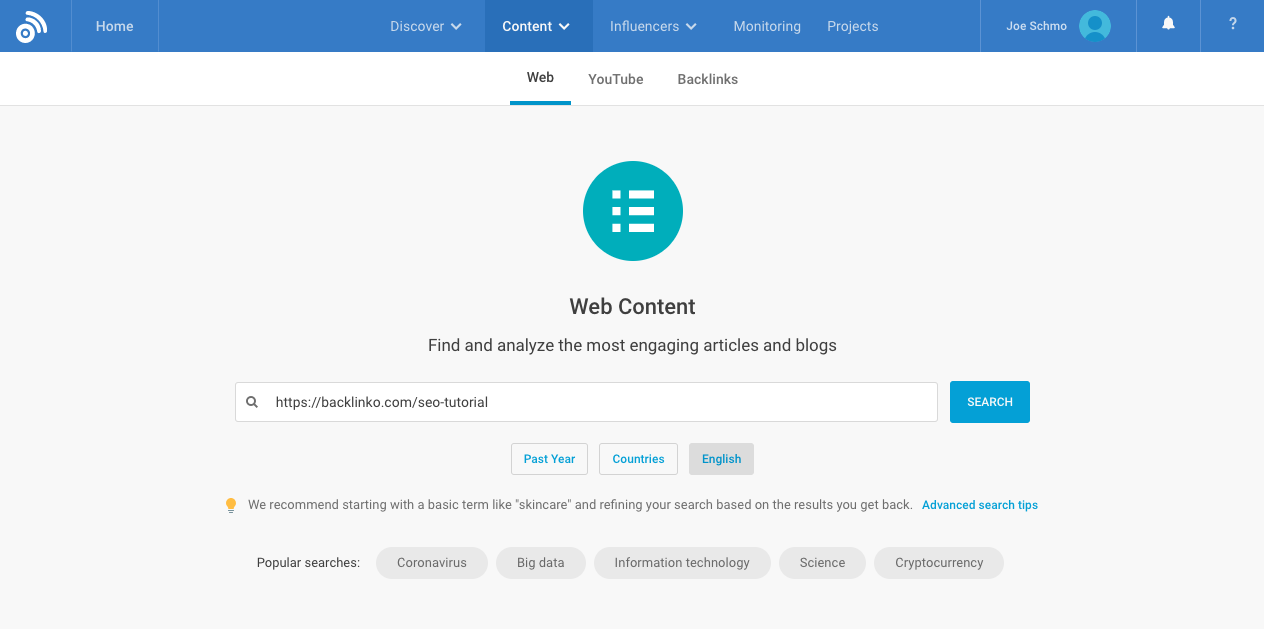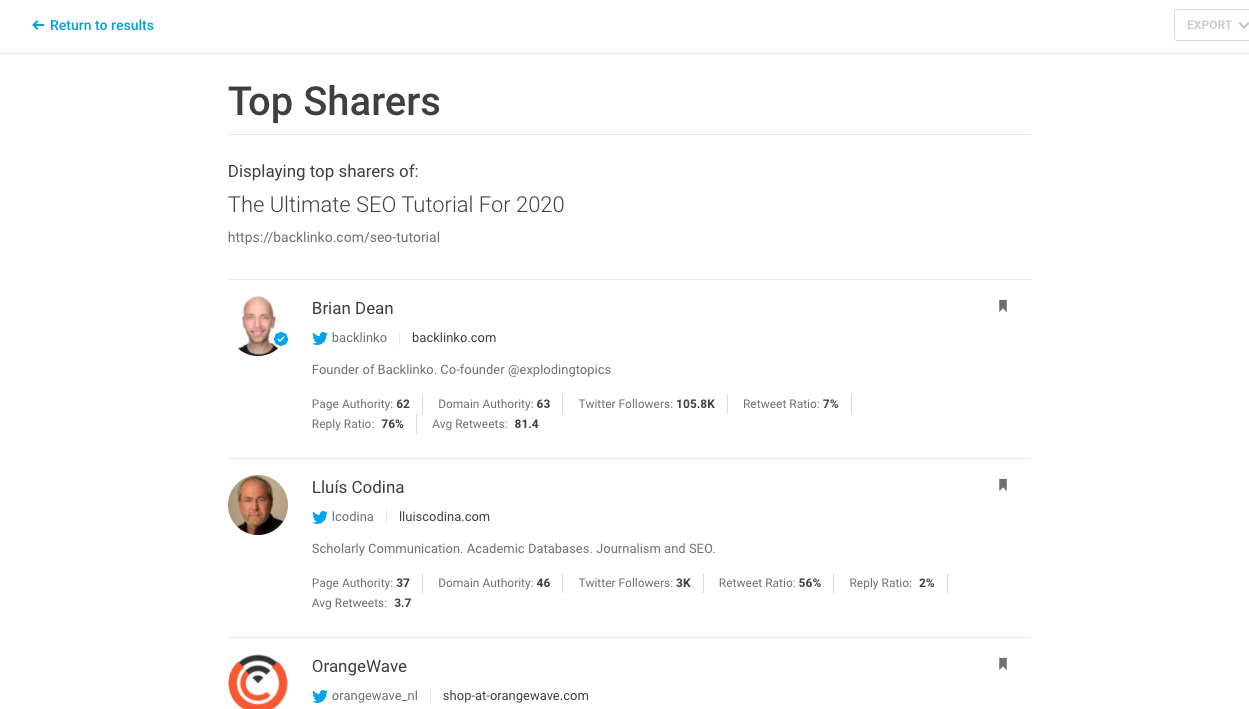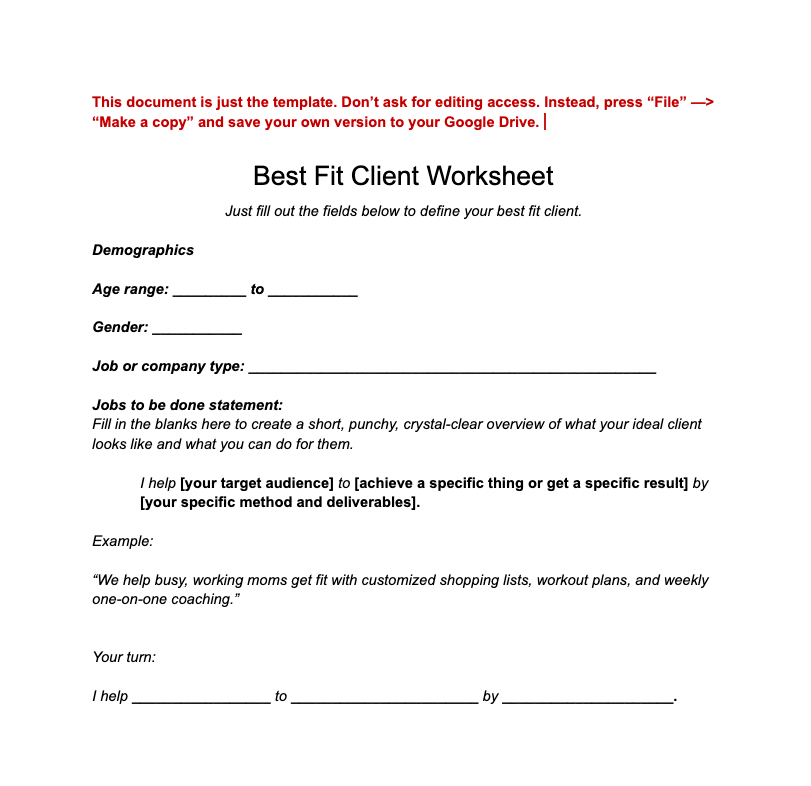What’s the hardest part of growing your business? Most people I know would answer, “Finding clients.” It doesn’t matter if you’re trying to get your first client or your 30th; it’s hard to drum up new business — unless you have a tried-and-true method to follow.
This blog will show you that method.
All you have to do is put in five to 10 hours of work per week, stay consistent, and follow instructions. If you do that, you can get 20 new clients in 63 days without:
- Adwords.
- Facebook groups or Facebook ads.
- Local business networking events.
- Cold calling.
- Meetups.
- Content marketing.
- Any of the other “beginner” marketing ideas that actually take a lot of expertise and luck to get right.
In short, this blog gives you the best possible chance at landing your next client.
There are three phases you’ll go through on your way to 20 clients:

- Phase 1: Use one of three beginner-friendly outreach methods to find your first five clients (30 days).
- Phase 2: Define your ideal client in detail so you can scale outreach quickly without a drop in response rates (three days).
- Phase 3: Use our #1 system for scaling so you can spend less time marketing while still getting great results (30 days).
Each section is set up for a different phase of your business.
Just starting out? Start with phase one.
Have a few clients but not sure how to scale? Jump to phases two and three.
 Get it Free FREE Download: Get our Client Generation Toolkit—a bundle of our best client outreach scripts, the Best Fit Client worksheet featured in this post, and more.
Get it Free FREE Download: Get our Client Generation Toolkit—a bundle of our best client outreach scripts, the Best Fit Client worksheet featured in this post, and more.
Phase 1: Find Your First Five Clients
There are three tried-and-true methods we’ve discovered in finding your first five clients:
- The Grapevine Method: Reach out to people you know through messages and social media to see if they need your help.
- The Perfect Proposal Method: Send good cold emails to your ideal prospective clients with valuable offers and advice (and yes, we’ll show you how).
- The Article Outreach Method: Find people who share an article about a specific process or service and offer them a done-for-you version.
The first method works best if you have at least 500 followers on social media or at least a few dozen people in your address book, but the other two will work for anyone — even if you’re a hermit who’s been living in a cave. There’s a method here for everyone.
Let’s walk through each one step-by-step.
The Grapevine Method

The grapevine method is about asking if the people you already know need your help.
Start by coming up with your “Power Offer.” A Power Offer explains exactly what you will give customers.
For example, a personal trainer could say something like this:
I’m looking for three people who want to lose 10 pounds and feel better about themselves over the next six weeks. Comment below if you’re interested.
Simple. Direct. Effective.
Let’s break down what’s included in a Power Offer:
Number of People
“I’m looking for three people…” When you’re starting out, you should stick with three to five clients so you can test your idea and refine it before taking on more clients.
End Goal
“…who want to lose 10 pounds and feel better about themselves.” Notice how the sentence describes a very specific end result. Notice the exact number “10.” This helps your readers form a clear mental picture of what they’ll get and where they’ll be when you’re done working together.
Timeframe
In this example, the result will be delivered “over the next six weeks.” Pick a conservative estimate that leaves enough time for you to deliver your product or service.
Call-to-Action (CTA)
“Comment below if you’re interested” tells the reader exactly what to do to take you up on the offer. This will vary depending on where you post your message.
You can adapt your Power Offer for almost any outreach method. The example above was written with social media in mind, but you can modify it for text or email. You just have to change the CTA to work in a one-on-one situation.
For example, instead of “Comment below,” you could say “Do you know anyone who might be interested?”
Here’s a template you can use to create your own Power Offer:
Public Post (Social Media):
Hey, I’m looking for [number between 3-5] people who want to [describe specific goal] in [a specific timeframe]. Comment below if you’re interested.
Personal Message (Text, Email, Direct Message):
Hey, I’m looking for [number between 3-5] people who want to [describe specific goal] in [a specific timeframe]. Do you know anyone who might be a good fit?
The main difference between these two messages is the CTA. The second version has a slightly modified CTA that will help you expand your audience. Even if Grandma doesn’t need personal training, she might send you a couple of referrals.
Once you have your offer ready to go, it’s time to get eyeballs on it.
Start by looking at the last 25 people you:
- Texted
- Talked to on Facebook, Twitter, LinkedIn, Instagram, Snapchat, or any other social media
- Emailed
- Messaged on Slack
- Talked to offline

Then send them all a message. Feel free to change up the exact wording to match your voice and your relationship with the person you’re messaging.
For example, what you’d send to someone on LinkedIn — who you’ve never met — will be different than what you’d send to your best friend.
Then, look for any social media channels where you have 500+ followers, and post the message on your public wall or profile.
If you have an average circle of friends, family, and acquaintances, your message should be seen by at least 500 to 1000 people. That should bring in five to 10 positive responses (including referrals), which will turn into your first one or two clients if your offer is solid.
Altogether, this entire process should take less than ten hours.
The Perfect Proposal Method
The next two methods involve cold email. But wait! This isn’t the cringeworthy inbox spam you’re probably used to.
A lot of people think “cold email” and immediately picture something like this:
![Hello, hope you are doing well [example of a bad email]](https://videofruit.com/wp-content/uploads/2020/10/Screen-Shot-2020-10-07-at-5.06.53-PM.png)
Don’t be like Jordan.
Instead, show your potential clients that you can help them by actually helping them before you get paid.
Here’s how it works.
Pick one person. One ideal prospect. You’re going to send the world’s best, most personalized cold email, so you have to focus on one person at a time.
If you don’t know who your ideal client is, answer these three questions:
- Who is doing work you respect?
- Who would be fun to work with?
- Who could give you additional exposure if you worked for them?
Think about those three questions for a little while. If you haven’t picked someone in two hours, just pick the first person that comes to your head.
Seriously. You’ll have chances to email more people. Don’t agonize over this.
Pick someone? Good.
Now, spend 20 hours crafting a proposal outlining how you can help that person.
This should be the most detailed document you’ve ever put together that explains exactly what you’re going to do for your prospective client.
One of my favorite examples of this was someone who used my own process to pitch me on a service.
A guy named Siggy read my blog and sent me a great email based on my advice. He even included a five-minute video going over everything he’d do to optimize my site!
Here’s what he wrote:

Another great example comes from one of our previous coaching clients, Devesh.
He recorded an amazing video proposal and sent it to entrepreneur Brian Dean outlining how Brian’s site Backlinko could benefit from A/B testing:
That proposal landed Devesh more than $10,000 of work, plus a great testimonial.
The Perfect Proposal method doesn’t just work for A/B testing offers or digital marketing. You can use it for a coaching or service business as well. Just send a super-detailed and thorough proposal to prove you know what you’re talking about and that you’ve done your homework.
Then rinse and repeat this process until you get your first five clients.
More reading: Recurring Income Case Study: $13K in 90 Days
The Article Outreach Method
The Article Outreach Method is another system that relies on cold email. This time, you won’t know who you’re going to email right away. Instead, you first read a how-to article to gain some skills, then you find people who are interested.
This process basically involves two steps:

Step one: Find a detailed “how-to” article explaining a service you can offer. Bonus points if it’s hosted on a popular blog with a lot of readers.
Step two: Find people who have shared that article on social media, reach out to them, and offer them a done-for-you version of the service
How do you find people who have shared the article?
Use Buzzsumo (you can just use the 30-day free trial).
For example, if you want to offer search engine optimization services, you could find a great step-by-step tutorial on Backlinko.
Then, go to Buzzsumo and enter the URL of the article you read:

And click on the “View Top Sharers” icon on the right hand side:

Then, you’ll see a list of everyone who shared the content:

As you look through the list, your goal is to find people who would be a good customer for you. Avoid other agencies or freelancers, and look for company owners or individuals who could use your help.
Then send them this simple email:
Body Text:
Lluis,
I’ve been following you since last January when I saw you share Brian Dean’s article on SEO techniques.
I love that article.
In fact, I started offering the exact process he laid out in that post as a service.
Wordstream is a really great app and I’ve put together three different SEO techniques that you could use to get more traffic to Wordstream (based on Brian’s advice in that article).
Here is a link to the full campaign and some projected results: [link to Google doc you put together that will blow their socks off]
Would love to help you guys implement some of Brian’s awesome strategies.
-Bryan
Do this ~25 times, and you should get your first paying client.
For more details, check out this step-by-step blog: How to Make $1,000 in the Next 14 Days without an Idea
Phase 2: Define Your Ideal Client (3 Days)
The first three methods we reviewed in this post are great for landing your first five customers, but they’re also high effort and not practical to use on a regular basis.
Think about it: How many proposals can you send out each week if you spend 20 hours on each one?
Not many, especially if you’re actually doing work for current clients at the same time.
As soon as you have your first five clients, you need to switch to a more scalable form of outreach so you can do it on an ongoing basis.
But first you need to prep a little bit.
Why?
To scale, you need to get in front of more potential customers, more regularly, with less work.
In short, you need to find an audience.
But you still need to talk in detail about your audience’s needs if you want them to buy from you.
If you want to do this at scale, find a bunch of similar people and talk to them in the same way. You’ll be talking to a bigger group, but the offer will still feel personalized if you define your target audience correctly.
Start by figuring out what that group of people should look like. In other words, you have to define your ideal client.
Here’s how you do it:
First, ask yourself, “Who did I get the best results for?” and, “Who did I really enjoy working with?” Your best clients will live in the happy place at the intersection of these two questions.

You can also look back at your first five clients and see who stands out. In our experience, your first five clients will typically include:
- Two clients you don’t like working with.
- Two clients that are good, but not great.
- And one great client that you really enjoyed working with.
For example, if you’re a personal trainer, you could work with:
- Two college friends.
- A 65-year-old retired female.
- A busy 45-year-old business owner.
- And a 37-year-old mom of two.
Out of that group, maybe you really liked working with the 37-year-old mom. If so, go look for more people like her. Take her general profile and expand it just enough to apply to anyone who could have the same kind of lifestyle, life experiences, and fitness goals.
If you’re not 100% sure which client to choose, just pick one. This isn’t a life-altering commitment. Just try this ideal client profile for 90 days and see how it fits. If you find out it’s not right for you, you can always pivot down the road.
We created a Best Fit Client worksheet that makes it easy to outline your best fit client. Download the Client Generation Toolkit and you’ll get a free copy.

This entire process should only take you one day. If you have to sleep on it, that’s fine. But by the third day, if you’re still not sure, just do your best and move on. You can always change your mind later on.
Phase 3: Start to Scale (30 days)
This is where outreach starts to get really fun. Why?
You get to start using other people’s audiences (aka partnership marketing).
Partnerships are our absolute favorite form of marketing here at Growth Tools. They:
- Are easy to get started.
- Work for beginners and expert business owners alike.
- Are a great way to build relationships with thousands of your ideal customers.
Plus, they require little startup time. You can start outreach this week and begin teaching new audiences in less than a month.
To this day, partnerships are the number one marketing channel for our own business, but they still work for beginners.
So what exactly is partnership marketing?
Think of a partnership like being the opening act for a popular band.

You find companies who already have an audience full of your ideal customers. Then, you strike up a deal with them to create useful content and answer questions for their audience for free in exchange for exposure and promotion.
This can mean:
- Podcast interviews.
- Guest posts or emails.
- Partner webinars, Facebook live sessions, or other video presentations.
The best part is that you get to pick the kind of partnership that works best for you.
- Great at writing? Try guest blogging.
- Feel more comfortable having a voice conversation? Get on a podcast.
- Come alive on camera? Do a video presentation.
You pick which kind of partnership you’d like to do and then go actively find companies who are already talking to your ideal audience.
For example, Sarah Doody is the creator of UX Portfolio Formula, an online course for UX designers. She could pitch the online design publication Smashing Magazine on a partnership webinar where she trains their audience to build an amazing design portfolio. In exchange, she gets to talk about her paid course on the webinar and ask the audience to sign up for her email list so she can follow up at the end.
It’s a win-win for both parties.

As a general rule, we usually see 200 to 1,000 new subscribers per partner webinar, but the exact number depends on how many people attend. It’s not uncommon for someone with experience to average 600-700, so 200 subscribers per webinar is realistic if you’re just starting out. Even with that lower subscription number, you only need to book five webinars in the next year to grow your list from zero to 1000+!
Of course, you do have to do some work to set these partnerships up, but in our experience, it’s realistic to teach one new audience per week, consistently. That’s more than enough to bring in a steady stream of new subscribers and customers.
This process works for more than online courses. Here are just a couple examples:
- Freelance marketer and consultant Alp Turan used guest emailing partnerships to land 408 new email subscribers, a $15,000 project, and a $3,000 per month retainer client.
- Nathan Barry’s email marketing automation company ConvertKit used partner webinars to help scale from $30k to $6.69 million in annual recurring revenue in just two years.
Plus it works for SaaS, eCommerce, and coaching businesses, too.
See more great examples, complete with a step-by-step guide, word-for-word outreach and follow-up scripts, and more performance benchmarks in our comprehensive guide to partnership marketing:
Partnership Marketing 101: How to Book Your First Partnership
90 Days Is All You Need
This post has everything you need to get your next 20 clients.
- If you’re just starting, use one of the Phase 1 methods to hustle to your first handful of real customers.
- If you already have a handful of clients, make sure you’re really clear on your ideal client profile (Phase 2), then give partnerships (Phase 3) a try.
Either way, if you follow the steps in this article and stick with it, you could completely transform your business in the next 90 days. The only question now is: Will you execute?
 Get it Free FREE Download: Get our Client Generation Toolkit—a bundle of our best client outreach scripts, the Best Fit Client worksheet featured in this post, and more.
Get it Free FREE Download: Get our Client Generation Toolkit—a bundle of our best client outreach scripts, the Best Fit Client worksheet featured in this post, and more.